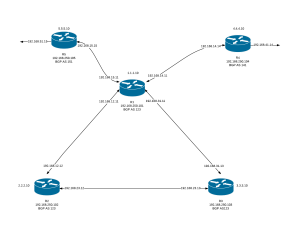Hey, I can DevOPS my Network too! - Intro
This will be the introduction to a multi-post series on some different methodologies that you too can use everyday either to learn, test or develop your going forward strategies on your network designs. Why is the buzzword DevOPS relevant here? The answer is in the methodologies and more so than anything else is the culture. Let me state that I am not someone to jump on bandwagons nor am I much of a fanboy. But I can completely relate with culture as being a main focus of DevOPS. I find it rather pleasing that a culture is driving this new way of doing things because it has been a long road of saying things such as “It is not my job”, “My environment is fine so it must be someone else’s” or just general finger pointing. I have been a huge proponent of accountability and driving towards a solution for most of my career (Read about it here). I am also notorious for accepting blame when no one else is willing to because I know that I will push forward and get the results required to solve an issue as well as ensure it’s repeatability. I know, I know I am pitching what everyone says as the reasoning behind DevOPS but I am living this day in and day out. I enjoy being one to float between silos in hopes of bridging the gaps to ensure that open communication is in order. So enough about this thing on DevOPS and onto what this series of posts will be about.
As stated above this will be a multi-post series on how you can leverage a few open source projects brought together to learn networking skills, test networking philosophies or continued development of your current/future networking environment. The focus will be to start from scratch and leverage technologies such as Vagrant, Ansible and Quagga to build out this environment (You can find a primer on Vagrant and Ansible here). And we will also be using GIT for our version controlling of our code. I will be publishing each phase of this series as I finish each section so there will be some lapse between posts, but I will make sure to tie them all together.
Below is a drawing of the environment that we will be creating in this series.

So sit back and enjoy!
Up next…Prep-Work